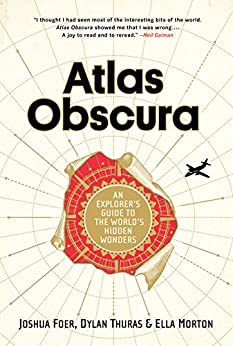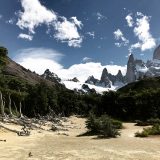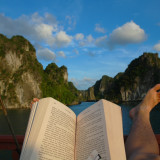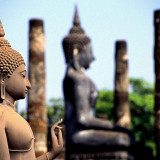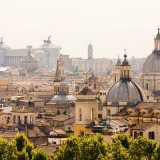Morocco’s Dar Al Atrya: The House of 900 Spices
In Morocco, Marrakech’s medina is a maze of streets weaving together between the confines of three-story-high mud walls. Dotted with historical fountains, palaces, and mosques, the medina is off limits to cars. Yet paradoxically, this seems to make it even more chaotic.
Motorcycles, bikes and donkeys speed down the narrow laneways, made even narrower by the abundance of traditional Moroccan products spilling from shops onto the street. Leather bags, wooden boxes, studded silver jewelry, teapots, lanterns, woven tapestries, Moroccan wedding blankets, and spices line the streets of the medina.
But step inside Dar Al Atrya and the pandemonium fades away. Dar Al Atrya—located in the centre of Marrakech’s medina—is what’s known as a Berber pharmacy or Maison des Epices.

Dar Al Atrya is a Berber pharmacy or Maison des Epices with a vast assortment of high-quality, handmade products. Credit: Victoria Boyd.
Endless rows of shelves crammed with colourful jars of herbs, spices, dyes, oils, teas and mysterious substances line the shop’s deep gold walls. In the entrance, a beautiful wooden table stands proudly.
The table is inlaid with eight different types of wood. The unique grains and colours of the wood weave an intricate design that mirrors the bold geometric patterns characteristic of Moroccan architecture. Much like its home country, we soon see that the table is filled with surprises.
Opening, folding and closing the table’s sleek wooden surfaces reveals a chess board, then a backgammon board, and finally another game board I’d never seen before. An intricate puzzle, with each fold the table changes identities, revealing its secrets within. A perfect metaphor for Marrakech.
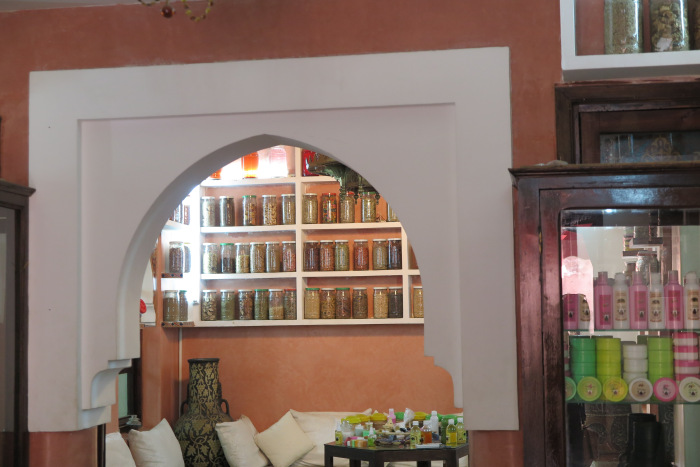
Inside Dar Al Atrya, the house of 900 spices. Credit: Victoria Boyd.
We’re greeted by a young Moroccan man named Mostafa. He leads us through a delicately carved 17th-century wooden doorway into a room lined with fresh white pillows. In front of the pillows sits a coffee table overflowing with bowls of various Moroccan teas. Sweet scents of mint, cinnamon, sugar, and ginger float towards us. At the centre of the room stands a tall counter covered in countless jars of intriguing substances.
As we sit, Mostafa tells us about his studies in Moroccan herbology and his future plans to teach Arabic abroad. Then he slowly begins to reveal the names of the mysterious herbs, spices, teas, and oils scattered before us.
Dar Al Atrya offers a cure for every ailment. Something to swallow, breathe, rub on, or wash in. Something for stress, insomnia, migraines, or congestion. We smell perfumes and soaps, herbs to cure common illnesses, and spices for cooking. We taste teas and rub oils on our hands. All natural, all local, all handmade.
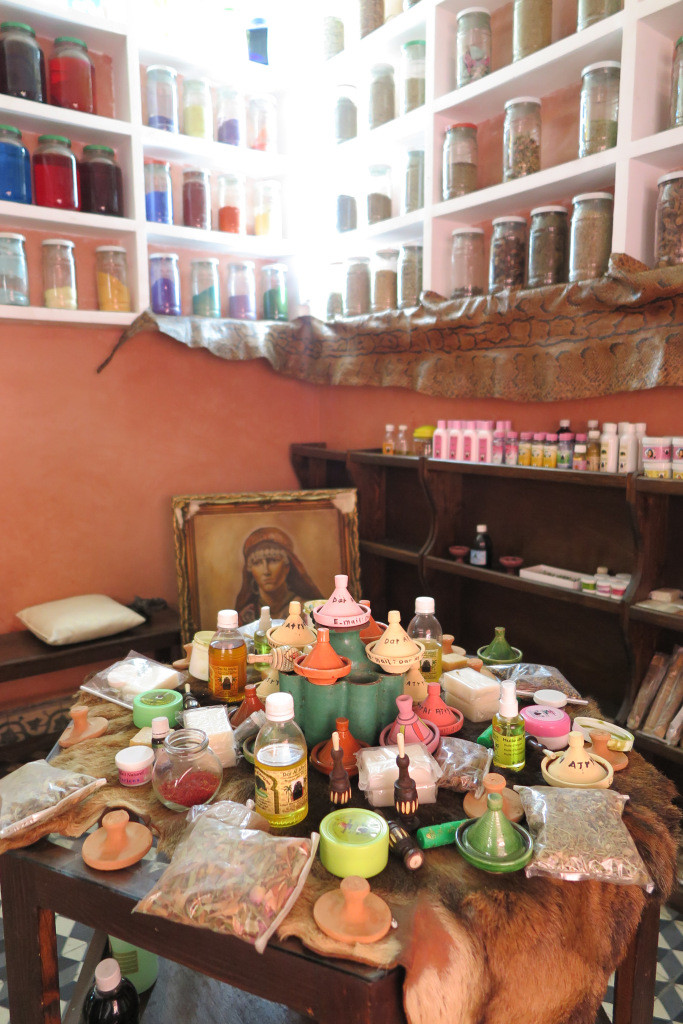
Table full of local, handmade products. Credit: Victoria Boyd.
One of the first things Mostafa shows us is Nigella Sativa seeds, a natural anti-inflammatory perfect for fighting stuffy noses, sore throats, and unbearable snoring. We learn that a small handful of the tiny black seeds wrapped in a thin cloth and inhaled after a quick rub on your palm immediately clears any respiratory problems.
We then taste several different kinds of tea, each one carefully crafted with an array of ingredients to treat a particular ailment. Our favourite was the anti-stress and relaxation tea which contained cinnamon sticks, roots from argan trees, dried mint, and over 15 other ingredients. Once steeped, the tea’s soft, smooth texture had us feeling instantly calmer.
Next came argan oil, one of Morocco’s most highly exported products. In Morocco, argan oil is an all purpose product. It’s used on the face, hair, and body for anti-wrinkle, anti-acne, hair serum, and moisturizer.
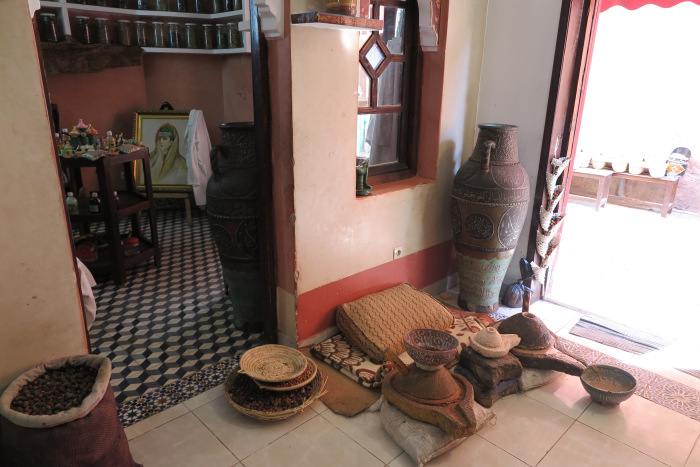
Some of the tools used to press the oil from the argan nuts. Travellers have many opportunities to watch as Moroccan women carry out their work. Credit: Victoria Boyd.
Argan oil is pressed from the nut of the fruit from argan trees, which grow almost exclusively in Morocco. Argan trees begin producing fruit at 30 to 50 years and live to be 150 to 200 years old. Extracting the oil from argan nuts—an art traditionally done by Moroccan women—is both physically demanding and time consuming.
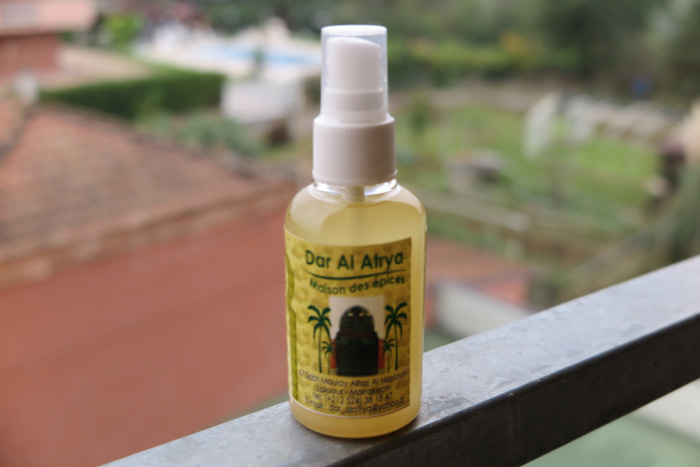
Pure argan oil is thin, light, and contains some of the resin from the nuts. It’s used as an anti-wrinkle serum or daily moisturizer and won’t clog your pores. Credit: Victoria Boyd.
Argan oil bought in Morocco is much less expensive—and more pure—than what we would typically find at home. Mostafa taught us that pure argan oil shouldn’t be oily, greasy, or thick. Rather, it should be thin, light in colour, and contain some of the resin from the nuts. Identifying these qualities ensures that the product is natural and hasn’t been supplemented with any other oils.

Despite spending over an hour in the shop, we only saw a small portion of its products. Credit: Victoria Boyd.
A visit to a Berber pharmacy in Morocco goes beyond your average market shopping trip; it’s a true cultural experience. Berber people have honed their herbal healing methods for centuries and Moroccans swear by these cures even as Western medicine is increasingly accessible.
Head to a Maisons des Epices for a glimpse into the ancient world of Berber remedies and apothecary; it’s an absolute must-do when visiting Morocco.
Have you visited a Berber apothecary shop in Morocco? Which products would you love to purchase? Let us know in the comments below!
Latest posts by Victoria Boyd (see all)
- Norway Untouched: A Journey into the Fjords - January 23, 2018
- Three Days, Three Cities: Belgium’s Brussels, Ghent and Bruges - December 12, 2017
- 5 Tips for Taking Better Travel Photos - November 14, 2017

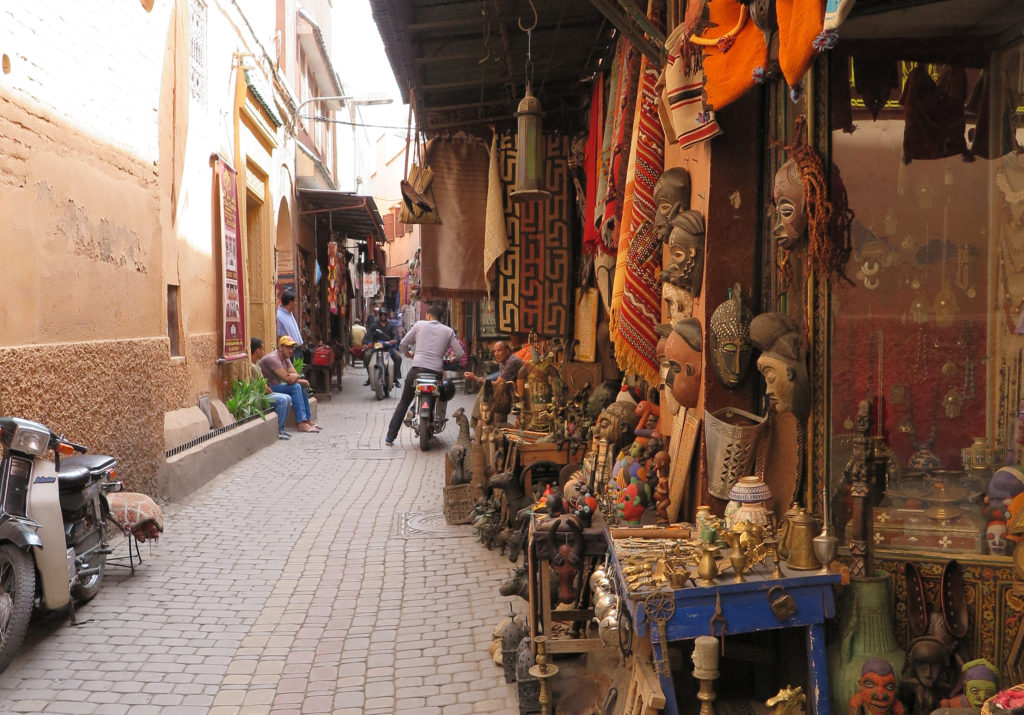


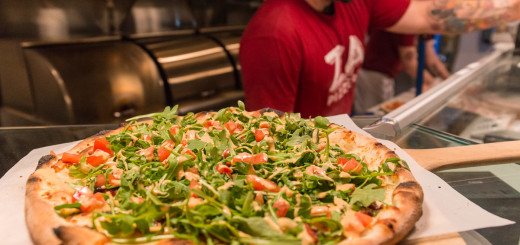


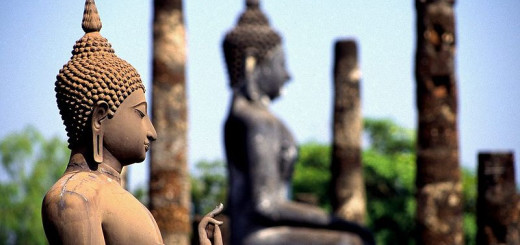
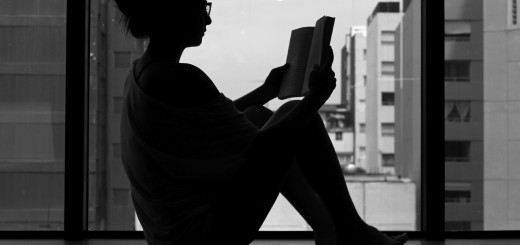
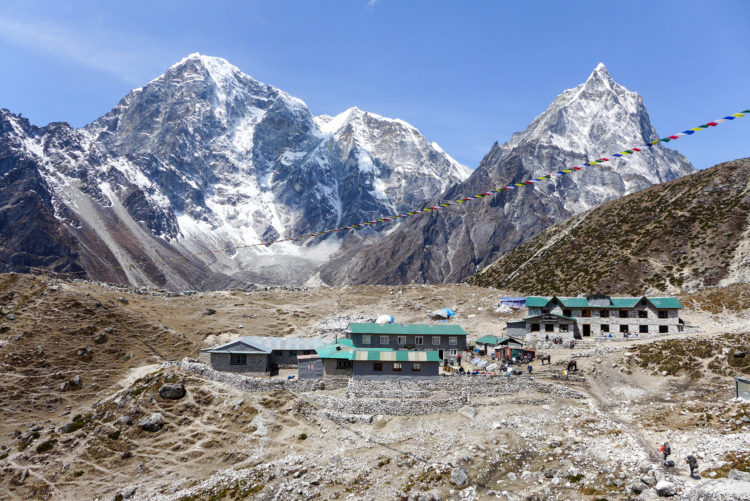 Almost all the tea houses in
Almost all the tea houses in 
